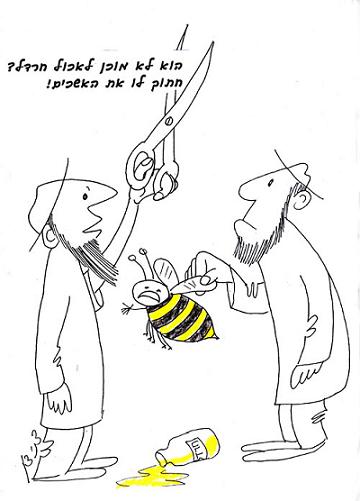
A beekeeper who sells the bees which will be born over the course of a year sells, in practice, three swarms. After they are born the beekeeper may use the hive for the production of honey. To keep the bees from birthing more swarms after the required three the beekeeper may “emasculate” them.
The scholars asked: How does the beekeeper emasculate the bees? Answer: He feeds them mustard. One of the scholars then clarified that when the bees eat the bitter mustard they need to eat sweet honey. After they eat the honey they feel full and lose their sex drive, so they do not reproduce, making honey instead. According to another scholar, Rabbi Yochanan, the early sages’ instruction l’saresan [interpreted above as “to emasculate”] actually meant l’serugin [“alternatively”] and not emasculation, that the beekeeper gives one swarm to the purchaser and keeps the next, so the purchaser takes alternate swarms: the first, third, and fifth. According to the early sages, the purchaser takes the first three consecutive swarms and after that takes alternating swarms.
(Babylonian Talmud, Tractate Bava Batra 80a)
